Top 10 Xinjiang Cuisine to Try during Your Xinjiang Tour
Xinjiang, located in the northwest region of China, is a land of diverse cultures and rich culinary traditions. The cuisine of Xinjiang reflects the region's various ethnic groups, and refers particularly to Uyghur cuisine. Signature ingredients include roast mutton, kebabs, roast fish and rice. Because of the Islamic population, the food is predominantly halal.
Ethnic groups in Xinjiang generally have different cooking and eating methods. Han people in Xinjiang use chopsticks while Kazakhs eat with their hands.In this article, I will take you on a culinary adventure, exploring the best of Xinjiang cuisine and introducing you to its must-try dishes, street food, traditional cooking methods, and more.
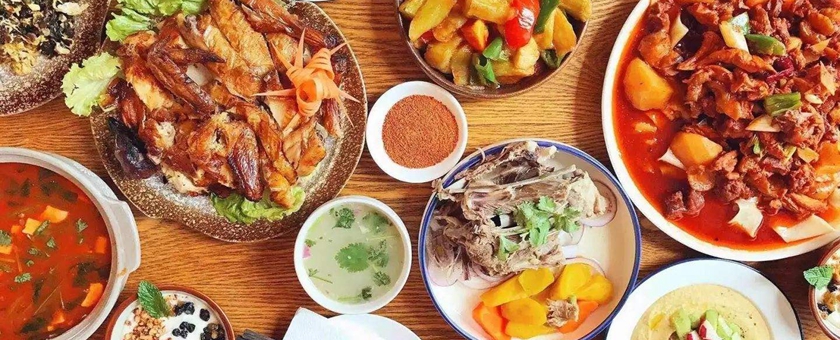
The unique flavors of Xinjiang
One of the highlights of Xinjiang cuisine is its bold and robust flavors. The use of aromatic spices such as cumin, chili, and Sichuan peppercorns adds a fiery kick to many dishes. Xinjiang cuisine is also known for its tender and succulent meats, with lamb being a staple ingredient in many traditional dishes. The combination of spices and slow cooking methods results in dishes that are bursting with flavor and melt-in-your-mouth delicious.
Top 10 xinjiang cuisine
When it comes to Xinjiang cuisine, there are a few dishes that you simply cannot miss. One of these is the famous Xinjiang lamb skewers, also known as "chuanr". These skewers are made with succulent pieces of marinated lamb, seasoned with cumin, chili, and other spices, and grilled to perfection. The smoky aroma and tender meat make them a favorite street food snack in Xinjiang.
Another must-try dish is the Xinjiang polo, a fragrant and flavorful rice dish. Xinjiang polo is made with long-grain rice cooked with a variety of ingredients such as lamb, carrots, raisins, and spices. The combination of sweet and savory flavors makes this dish a true delight. The bellowing specific Xinjiang dish should be the top 10 xinjiang cuisine you should try during your time in Xinjiang
1. Xinjiang Roast Meat
Xinjiang kebabs are a snack which is popular nationwide in China, which can be found in the streets and bazaars throughout Xinjiang. The kebabs are turned continually and basted frequently, and when they are almost done, salt, pepper paprika and cumin are sprinkled on them. Kebabs are crispy outside and tender inside, slightly salty and hot. They are not greasy and have no unpleasant smell.
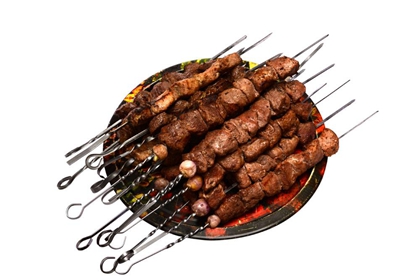
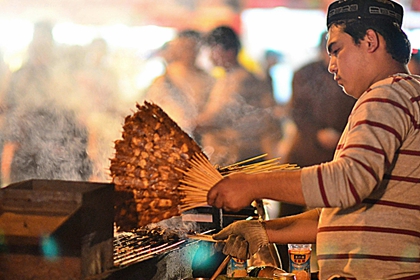
2. XinjiangDapanji
Xinjiang Dapanji, also known as Shawan Dapanji, is a famous dish in Xinjiang, originated in the 1980s. The main material are chicken and potato blocks, Sichuan powder and noodles. Colorful and spicy chicken, soft and sweet potatoes are the best dishes on the table.
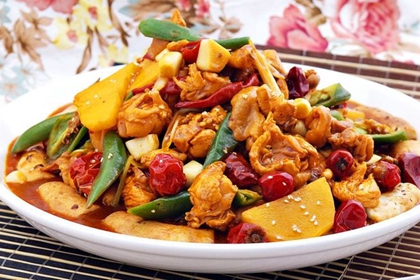
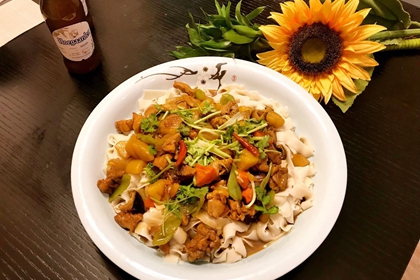
3. Xinjiang Stewed Mutton Cubes
This is a Xinjiang dish prepared especially for festivals. Cut mutton into cubes of 500 grams a piece and boil them in a big pot. When they are half done, remove the foam; and when they are 80 percent done, put onions, pepper, ginger slices, carrots, turnips and tomatoes in it. Place it on a big plate and put some salt in the stock and remove it to a bowl. Before eating the mutton, remember to dip it in the stock.
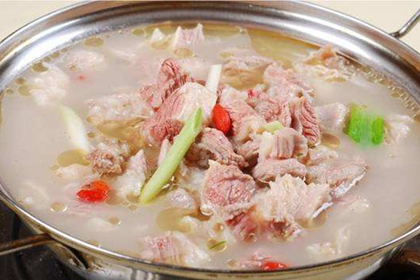
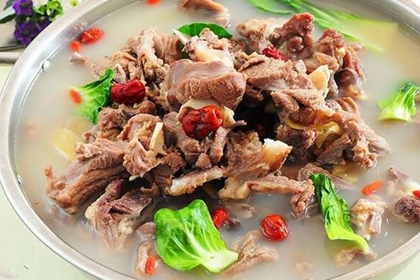
4. Xinjiang Sanzi
Sanzi is one of the Hui snacks eaten at festivals. It is considered as a table delicacy for giving guests a special treat. To make sanzi, use wheat flour mixed with vegetable oil and juice of the Chinese prickly ash. Knead the dough repeatedly, and then divide it into several pieces. Pull the dough into thin noodles and deep-fry the noodles in oil for several minutes.
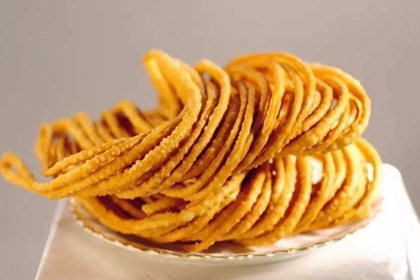
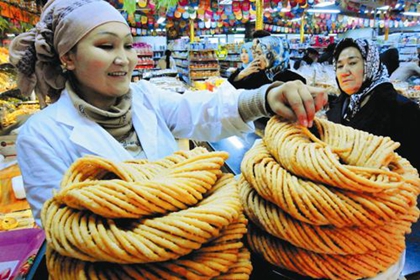
5. Xinjiang Ququ (Boiled Dumplings)
Ququ is s quite similar to Wonton in other parts of China, but is unique in materials. First, chop up the mutton and then mix it with onion, salt, pepper and a little stock to make the stuffing. Wrap the stuffing in dough wrappers in the shape of squares. After boiling it in broth, some coriander is added. Ququ have thin skins and tender stuffing. They are delicious and nutritious.
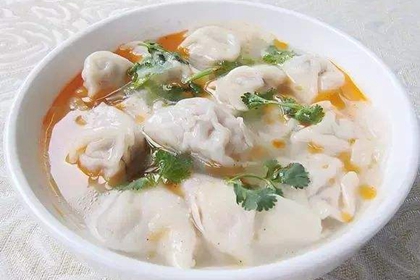
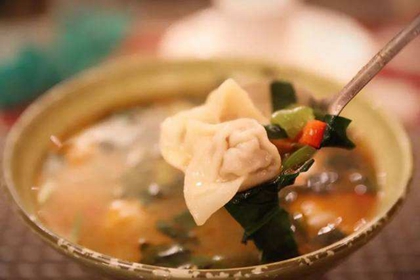
6. Xinjiang Roast Dumplings
The stuffing for these dumplings is made from first-class mutton, with added onions, salt and pepper. After wrapping the stuffing in dough, the locals roast the dumplings in a big oven for about 20 minutes. The roasted dumpling is really delicious with its rather crispy skin and tender stuffing. The Uygurs often eat these together with nang (crusty pancakes) and rice to be eaten with the hands.
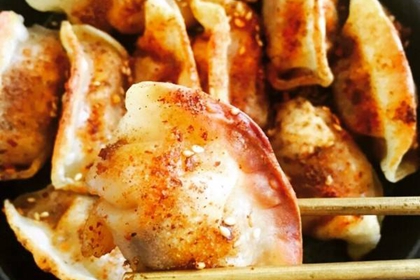
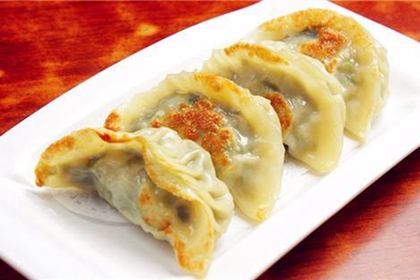
7. Xinjiang Zhua Fan (Rice Eaten with the Hands)
People habitually pick the food from the tray by hand hence the name 'Rice Eaten with Hands'. Zhua Fan is cooked with ingredients from fresh mutton, carrot, vegetable oil and rice. The ingredients are mainly mutton, chicken and vegetarian, but the most common one is mutton. This cuisine is soft, delicious and nutritious. It is a feature of festivals, funerals and weddings.
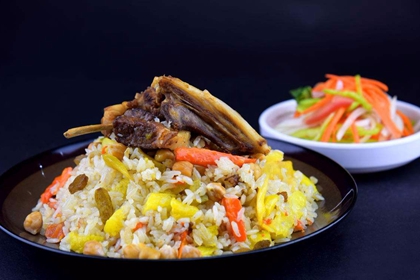
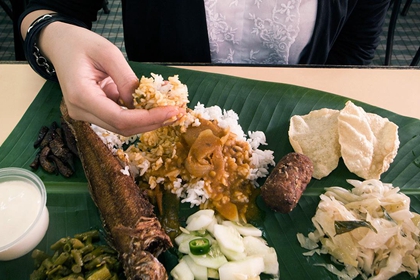
8. Xinjiang Oily Pyramids
This food is a favorite of the Uygurs. First, add lukewarm water to flour to make dough, and mix it in a little yeast. After one hour, add some water, knead the dough and let it stand for a while. Then divide the dough into several pieces, daub some vegetable oil on the outside, and roll it out piece by piece. Then daub some sheep's tail fat and sprinkle a little salt and pepper on it, and roll the dough. Cut it into sections, and twist the sections into pyramid shapes. Steam the pyramids are eaten together with soup or noodles in soup.
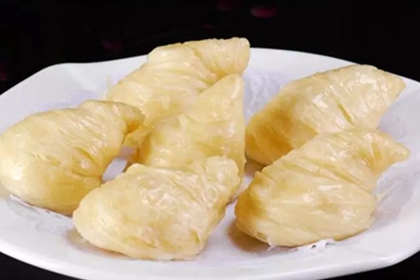
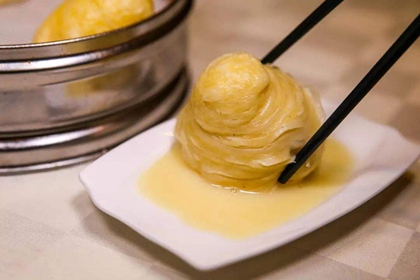
9. Xinjiang Pull Sliver
Pull sliver is commonly known as Xinjiang noodles. It is made by hand without rolling or pressing, with various kinds of vegetables and beef and mutton added. It is a kind of popular pasta popular with people of all ethnic groups in Xinjiang, especially with Uygur and Hui nationalities. Famous at home and abroad, loved by the people of all countries.
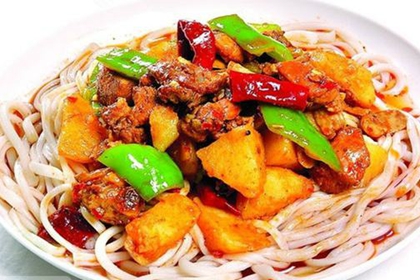
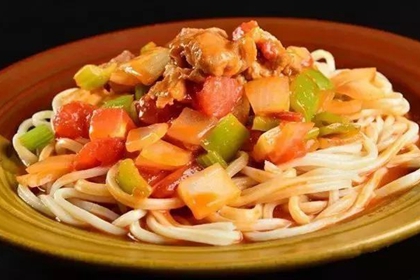
10. Xinjiang Roast Lamb
Roast Lamb is a traditional meat product with local flavor in the diet of Uygur people. It is a big dish with national characteristics, a traditional delicacy formed in the nomadic life of this ethnic group for thousands of years. It is a famous traditional dish for Xinjiang ethnic minorities to entertain foreign guests.
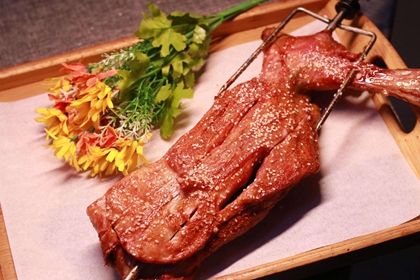
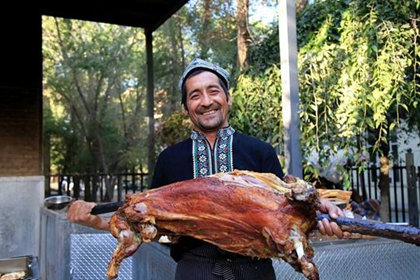
Xinjiang street food
One of the best ways to experience the flavors of Xinjiang cuisine is through its street food. The streets of Xinjiang are filled with vendors selling a wide range of delicious and affordable snacks. From crispy fried manta (dumplings) to hand-pulled noodles, there is something to satisfy every craving. Don't forget to try the Xinjiang-style naan bread, which is baked in traditional clay ovens and served hot and fresh.
Traditional cooking methods in Xinjiang
Xinjiang cuisine has a long history and is deeply rooted in traditional cooking methods. One of the most iconic cooking techniques in Xinjiang is the use of a tandoor oven. The tandoor oven is a cylindrical clay oven that is used to bake bread and roast meats. The heat from the charcoal fire gives the food a unique smoky flavor and helps to retain its moisture and tenderness.
Another traditional cooking method is the use of hand-pulled noodles. Xinjiang is famous for its la mian, or pulled noodles, which are made by repeatedly stretching and folding a piece of dough. This technique creates noodles that are chewy and springy in texture, perfect for soaking up the flavors of the rich broths and sauces they are served with.
Influences on Xinjiang cuisine
Xinjiang cuisine has been influenced by a variety of cultures and culinary traditions. The region's location along the ancient Silk Road has brought flavors and ingredients from Central Asia, the Middle East, and China. The use of spices such as cumin and chili can be traced back to the Central Asian and Middle Eastern influences. Chinese cooking techniques and ingredients have also made their way into Xinjiang cuisine, resulting in a unique fusion of flavors.
Exploring the best restaurants in Xinjiang
For those looking to experience the best of Xinjiang cuisine in a restaurant setting, there are several establishments that should not be missed. One such restaurant is "Kashgar Kitchen", located in the heart of Xinjiang's capital city, Urumqi. This restaurant offers a wide range of traditional Xinjiang dishes, from hearty stews to flavorful kebabs.
Another popular restaurant is "Silk Road Flavor", known for its authentic Xinjiang polo and hand-pulled noodles. The restaurant's cozy atmosphere and friendly staff make it a favorite among locals and tourists alike.
Where to find the top Xinjiang food
If you prefer to explore the local food scene on your own, there are several markets and food streets where you can find the best Xinjiang food. The Grand Bazaar in Urumqi is a bustling market filled with vendors selling everything from fresh fruits and vegetables to spices and meats. Here, you can sample a variety of Xinjiang snacks and street food, as well as purchase ingredients to recreate the flavors of Xinjiang at home.
Cooking classes and culinary tours in Xinjiang
For those looking to immerse themselves in the culinary culture of Xinjiang, there are also cooking classes and culinary tours available. These experiences offer a hands-on approach to learning about Xinjiang cuisine, allowing you to participate in the preparation of traditional dishes and learn from local chefs. Whether you're a beginner or an experienced cook, these classes and tours are a great way to deepen your appreciation for Xinjiang cuisine and its unique flavors.
Conclusion
Xinjiang cuisine is a culinary treasure trove, offering a delightful fusion of flavors and a rich cultural heritage. From the bold and aromatic spices to the tender and succulent meats, Xinjiang cuisine is a true feast for the senses. Whether you choose to explore the street food scene, dine at the best restaurants, or try your hand at cooking traditional dishes, a culinary adventure in Xinjiang is sure to be an unforgettable experience. So pack your bags and get ready to discover the best of Xinjiang cuisine, one delicious bite at a time.
CTA: If you're a food lover and crave unique culinary experiences, don't miss the opportunity to embark on a culinary adventure in Xinjiang. Book your trip today and indulge in the flavors of this vibrant region.

 Flow us
Flow us

